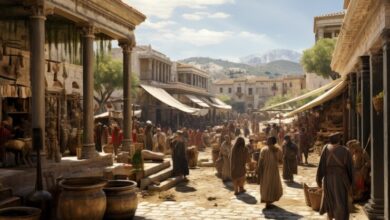Understanding Перекалач: A Comprehensive Guide

The culinary world is full of unusual recipes with rich ethnic undertones. One of these is Перекaлач, a classic dish with a long history in Eastern European cooking. This tutorial will provide you a thorough understanding of Перекалач, covering its history, cultural significance, preparation techniques, and variants. This article is the ultimate reference for anything related to Перекалач, whether you are a food connoisseur, a historian, or just inquisitive about cuisine from throughout the world.
The History of “eрекалач”
The meal known as “Перекалач” is native to the Slavic countries, especially Belarus, Russia, and Ukraine. Folktales and ancient writings provide connections to its centuries-old history. The phrase “Перекалач” originates from the Slavic word “калач,” signifying a particular kind of bread or pastry. Prefix “пере-” was introduced over time to denote a variation or a particular way of preparing food.
Traditionally, this dish was made for important events including harvest festivals, marriages, and religious holidays. It was divided among family members and guests as a display of hospitality and was regarded as a symbol of success and abundance.
Importance to Culture
Food has an important role in social and cultural identity in Eastern European civilizations, where it serves as more than just nourishment. Under this particular context, Перекaлач has a specific place. Functioning as the focal point of celebratory dinners, it is frequently linked to customs and festivities. The bread’s elaborate patterns and forms have more symbolic significance than just aesthetics. An Перекалач that is circular, for instance, may signify power and unity, while one that is braided may symbolize eternity and the cycle of life.
In addition, cooking Перекaлач frequently involves the whole community, bringing neighbors and relatives together. Telling stories and passing down traditions from one generation to the next is considered as a means of strengthening bonds during the process itself.
Components and Methodology
The simplicity of Перекaлач is what gives it its beauty. Among the fundamental components are:
Water: Required to link the components together.
Yeast: Gives bread its airy, light texture by leavening it.
Salt: Brings out the taste.
Sugar: Gives the bread a hint of sweetness.
Eggs: Frequently used to add richness to the dough and a glossy finish to the glaze.
Steps in Preparation
Making the Dough:
To start, put the flour, sugar, yeast, and salt in a big bowl. To make a dough, slowly add warm water. After that, the dough is worked into an elastic, smooth surface.
First Rise: The dough is allowed to rise in a warm location following kneading. This stage enables the yeast to do its magic and double the size of the dough.
Shaping: The dough is punched down and shaped once it has risen. This is the point at which Перекaлач’s creative quality is useful. Depending on the desired symbolism, the dough can be twisted, braided, or molded into other shapes.
Second Rise: The dough is given another chance to rise after shaping. This guarantees a light texture for the finished product.
Baking: After shaping, the dough is baked till golden brown in an oven that has been warmed. Before baking, beaten egg glaze is frequently spread on top to give the bread a shiny appearance.
After baking, Перекaлач is allowed to cool on a wire rack. Generally, it is served warm or room temperature.
Different forms of Перекaлач
Although the components listed above are used to make the traditional Перекалач, there are various regional versions that use different flavors and cooking methods.
Sweet Перекaлач: This type of bread is made sweet in some places by adding sugar, honey, or dried fruits to the dough. This version is frequently consumed with tea or as a dessert.
Перекалач with a savory flavor: You can add cheese, herbs, or garlic to the dough to suit your palate. This version is well-liked as an appetizer or side dish.
Stuffed Перекалач: Stuffing the bread with meat, veggies, or mushrooms is another well-liked version. This makes the bread a filling meal in and of itself.
Holiday Перекалач: Specifically made for the holidays, these special versions have richer ingredients like butter or sour cream and complex decorations.
Contemporary Interpretations
Перекaлач has enjoyed a rise in popularity recently in both its traditional form and in contemporary versions. This traditional meal is being given a modern makeover by chefs and amateur bakers alike who are experimenting with new ingredients and methods.
For instance, in order to appeal to health-conscious diners, several contemporary recipes call for the use of whole-grain flours, seeds, and nuts. Others might use flavors from throughout the world, such Middle Eastern spices or sugar substitutes like agave syrup.
The fundamental character of Перекалач, which is a symbol of community, celebration, and tradition, does not change despite these developments.
Conclusion
Перекaлач is a cultural relic that symbolizes the essence of Eastern European customs, not merely a bread. From its modest beginnings to its deep symbolism, this meal has endured and continues to unite people from all walks of life.
Перекалач can be prepared for a festive event or as a means of learning about its historical background. Either way, it provides an intimate look into the Slavic culinary and cultural legacy. It is a dish that is worthy of celebration due to its variety and ageless charm.
ALSO READ:
Pi Coin Value in 2030: An In-Depth Analysis
Understanding Himanshi Parashar’s Age: Unraveling the Enigma




